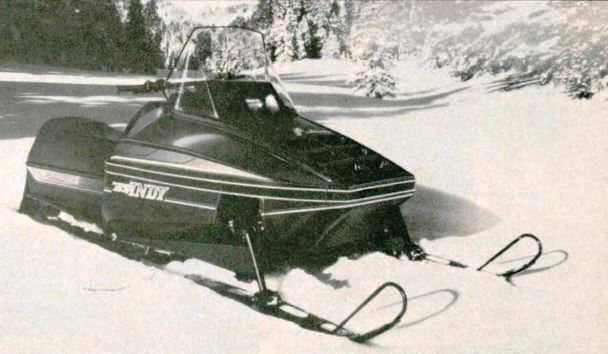
 Polaris can’t leave well enough alone. Last year was the year of the Centurion, 500cc of triple-powered punch. Before that the Roseau, Minnesota, manufacturer gave us the liquid-cooled TX-L, the 340 that was firmly convinced that it was a 440.
Polaris can’t leave well enough alone. Last year was the year of the Centurion, 500cc of triple-powered punch. Before that the Roseau, Minnesota, manufacturer gave us the liquid-cooled TX-L, the 340 that was firmly convinced that it was a 440.
So, does Polaris sit back and rest on its laurels? But, n-o-o-o. This performance-oriented snowmobile company has to try and outdo itself every year. And, for 1980, they’ve done it again. This year’s version of one-upmanship is titled TX-L Indy.
A hybrid, the Indy features the high performance attributes of the TX-L, the scourge of professional cross country racing, while combining the front end handling of the RX-L, Polaris’ oval sprint sled. The hybridization born of the RX-L gives the Indy its name — from the independent, automotive-style front suspension (IFS).
The Polaris IFS is not the first such system to hit the trails, but it is definitely more sophisticated than anyone else’s. And also more costly to produce.
The initial IFS sled, Arctic’s Trail Cat, was built for family trail riding; moderate, “stop and smell the roses’‘-type touring. The Indy is built for the performance buff who wants a strong dose of speed with sophisticated handling. It’s for the guy who wants to break out of the pack. The Polaris Indy is for the hotshot in all of us.
That multi-strutted IFS is the direct result of Polaris’ race shop. A leader in automotive-type front suspensions over the past few years, Polaris Racing blitzed the sprint circuit two years running through superior handling while giving up horsepower to conventionally leaf-sprung sleds. And, the race shop, when given the go ahead to develop a consumer IFS, decided to field test the sled’s front end in the toughest conditions possible, cross country racing. Entered in several Midwestern cross country events last season, the prototype Indy was a consistent and quick finisher in the hands of Polaris veterans Burt Bassett, Ed Monsrud and Bob Przekwas.
The Indy IFS, born from oval sprint experience and weaned on cross country racing, was ready for the SNOW GOER test session last spring. The preproduction Indy sported a very sophisticated front end that housed six inches of vertical travel.
In actuality the IFS is a coil-over- shock suspension that features motorcycle-type, five-way adjustable shock absorbers. These shocks can be adjusted for different riding styles and snow conditions and can be set from firm to soft, depending upon your personal preferences. A set of radius arms allows the front end to be adjusted for camber, and helps eliminate severe “bump” steer, a problem on early IFS units tested. The trailing arms are triangular in shape and reach from the ski spindle to the rear housing. A torsion bar (also called an anti-sway or stabilizer bar) at the front, reaching from ski to ski, balances ride and front end dive on bumpy trails.
The IFS unit tucks into the bellypan when encountering bumps, but struts and shock ends still hang out somewhat in deep powder. It’s a fact of life in deep snow that the TX-L Indy will not plane quite as well as the regular leaf-sprung TX-L. Therefore, if you’re looking for a comparison between the two, the regular “L” and the Indy, the Indy will be slightly slower. The added weight, about 20 pounds, of the IFS also hinders the Indy, because both machines use the same powerplants. But, on hardpack and ice, the Indy should have the advantage, especially in rough going where the IFS can literally “walk” over bumps while the leafspring suspension sled will be jouncing and tending to be airborne more often.
The Indy’s other advantage is that it has been designed as a “total suspension” sled. The front end is fine-tuned to match the rear end; also a long travel type unit.
The Polaris TX-L suspension has been refined over the past few years until it has attained its present state of tune. There are six inches of travel in it. For longevity, the rails and brackets are now all unitized construction aluminum. The Indy features special shock valving and recalibrated springing to Suit the IFS. According to Polaris spokesmen, the long travel rear suspension was not achieving its full potential because of so little front end travel. That’s why Polaris engineers went ahead with the IFS match front to rear.
The Polaris rider, familiar with the TX-L mystique, won’t be disappointed. Unless he has the regular “L” or a Centurion.
Under the restyled, wedge-shaped hood lies the famed “L” power package. Putting out horsepower in the mid-50s range, the EC34PL engine isn’t necessarily the hottest piece of 340cc motor around. But, combined with the Polaris clutching, that sometimes has to be defined as mystical, the twin cylinder motor delivers plenty of snoose to the track. At the SNOW GOER speed runs, the lndy showed eighth mile acceleration equal to many so-called “hot” liquid-cooled 440s. Only through the quarter and terminal velocity tests did the lack of horsepower become reflected. No matter how politely you phrase it, top speed is the direct result of horsepower.
But, as many cross country racers have discovered, there are very few sleds that can match the “L” in approach-to-approach performance. This machine has the same midrange torque and ability that has been standard in the regular TX-L and was built into the Centurion.
This is a performance sled. There are all the standard performance items loaded onto it. Twin fixed jet VM38 Mikuni carbs mount onto the mono-block constructed engine. There is CD ignition. The aluminum cylinders feature steel sleeves and the head is a single aluminum piece. Exhaust is a Y-manifold dumping into a single resonator canister. The entire system is tuned to give a broad torque range.
Cooling is standard TX-L practice with a water pump mounted to the recoil start side of the engine and extrusions mounted under the runningboards. A thermostat keeps the pressure and temperature under control.
Keeping the sled under control is a hydraulic disc brake on the jackshaft. This unit has been around for years now, but must rate as one of the absolute best in the snowmobile business.
Also quickly becoming one of the best Polaris features is the tough Yokohama-built rubber track. This involute drive design uses fiberglass reinforcing rods for greater wearability and strength. It was a similarly designed track that was used on six Polaris Galaxy snowmobiles that bested the Alaskan wilderness without a single track failure. And, it’s the same basic design that has propelled many TX-L mounted racers to victory in the rugged cross country circuit.
What has kept the Polaris TX-L series alive in such testing conditions has been the strength of its construction. The Indy, like its TX-L sibling, has an aluminum frame with rugged aluminum subframe. The pan is a rubberized plastic, similar to that used by automakers in the nosepans of their higher performance models.
Make no doubt about it. This new Polaris is every bit a performance machine. On the SNOW GOER test track, this sled cut an impressive list of statistics. It has 440 potential from its 340cc engine. It has the handling of a race car. Turn it where you want it to go and it’ll get you there. Unlike some IFS sleds that we have ridden, the Indy seems more positive in directional stability. It’s most likely a result of camber compensating arms and the stabilizer bar. There is no “wander” inherent in this sled at all, a fault of some IFS racing prototypes that we have ridden in the past.
And, when Polaris engineers claim that the suspension is tuned for the ultimate ride, it’s not just so much public relations or advertising hype. The long travel rear end and the long travel front end meld well together, just as it was intended. But, don’t be fooled. If you’re like we were, you’ll want to spend some time on this IFS machine. At first because it’s unlike anything you’ll have ever ridden. And, then, because, you’ll like it so much. It’ll feel “soft” and “mushy” when you first try it, but you’ll find that feeling going away almost immediately as you realize just how darn smooth it rides and just how hard you can corner with it.
In the powder snow, the regular “L” is better. But, on a twisting, windy, hardpacked trail, watch out that you don’t find yourself driving over your head. The Indy is very forgiving, but it’s also very deceptive because it’s so smooth. Like driving a Cadillac after having been hammering a VW Beetle all day, you’ll quickly loose awareness of speed. The Indy is that smooth.
This apparently is the year of plush performance. Polaris offers the performance-oriented Indy, but retains the mystique of the TX-L and its performance heritage. We’ve discussed performance, so let’s tell you briefly about the comfort.
In addition to “total comfort” front and rear, you get a new and more plush ride from the vacuum-formed foam seat. There are comfort padded handlebars, both for design appeal and safety considerations. For ease of mind, there are wraparound bumpers, extruded at the front and rolled steel at the rear.
Standard equipment includes single 60 watt headlamp, tachometer, speedometer, temperature dash light, fuel gauge, and emergency on-off electrical switch.
It’s a lot of sled that Polaris has entered in the performance one-upmanship competition. It’s sophisticated. And it’s probably the best looking snowmobile to come out of Roseau in the past 10 years.
Long on comfort and long on performance, Polaris lets you know that they aren’t satisfied to rest on their laurels. But what can they do for next year? An Indy 500?
MODEL: POLARIS TX-L INDY – Suggested Retail Price: $3149
Engine/Drivetrain
Engine Position: Front
Manufacturer: Polaris
Displacement: 340cc
Cylinders: Twin
Cooling: Liquid
Horsepower @ RPM: N/A
Compression Ratio: N/A
Bore/Stroke: 61 .78mm x 55 .6mm
Carburetor(s): Twin Mikuni VM38
Drive Clutch: Polaris
Driven Clutch: Polaris
Exhaust System: Polartone
Intake Silencing: Baffle box
Vital Statistics
Weight (dry): 425 lbs.
Weight (wet): 474 lbs.
Fuel Capacity: 7.3 gallons
Fuel Tank Location: Center
Snowmobile Length: 106 in.
Snowmobile Width: 42 in.
Snowmobile Height: 42 in. (with windshield)
Ski Stance: 36.5 in.
Suspension / Track
Suspension Type: Aluminum slide rail
Suspension Damping: Shocks
Ski Suspension Type: IFS
Ski Damping: Torsion bar
Track Length: 121 in,
Track Width: 15 in.
Track Material: Rubber
General Information
Brake Type: Polaris
hydraulic disc
Brake Mounting: Jackshaft
Chassis Material: Aluminum
Cowl Material: ABS
Seat Material: Vacuum foam in place
Ignition Type: CDI
Instruments: Tachometer, speedometer, red light
Storage Location: Rear seat
Headlight: Single 60 Watt

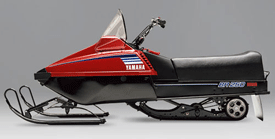
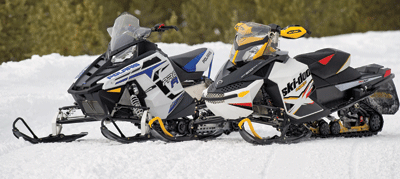
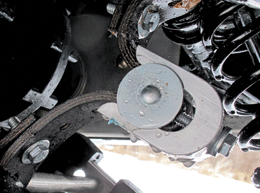
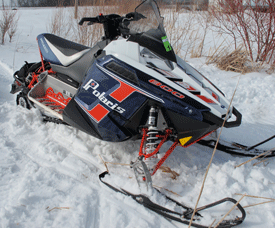

What is the current value of a 1980polaris340 txl-indy sled,lower miles&great condition-have a nice one that runs well.